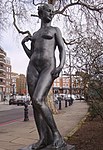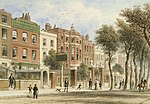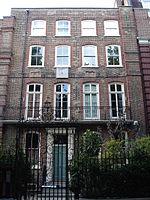Oakley Street, Chelsea
Chelsea, LondonGrade II listed houses in the Royal Borough of Kensington and ChelseaKing's Road, Chelsea, LondonPages containing links to subscription-only contentStreets in the Royal Borough of Kensington and Chelsea

Oakley Street is in the Royal Borough of Kensington and Chelsea, London. It runs roughly north to south from King's Road to the crossroads with Cheyne Walk and the River Thames, where it continues as the Albert Bridge and Albert Bridge Road. The street was named after Baron Cadogan of Oakley.
Excerpt from the Wikipedia article Oakley Street, Chelsea (License: CC BY-SA 3.0, Authors, Images).Oakley Street, Chelsea
Chelsea Embankment, London Chelsea (Royal Borough of Kensington and Chelsea)
Geographical coordinates (GPS) Address Nearby Places Show on map
Geographical coordinates (GPS)
| Latitude | Longitude |
|---|---|
| N 51.483536111111 ° | E -0.16730555555556 ° |
Address
Chelsea Embankment
Chelsea Embankment
SW3 5HH London, Chelsea (Royal Borough of Kensington and Chelsea)
England, United Kingdom
Open on Google Maps











